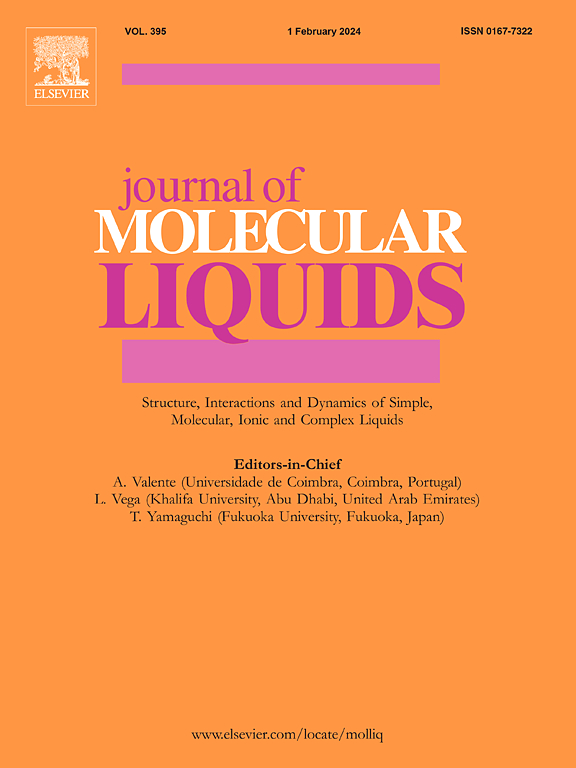Preparation and enhanced oil recovery evaluation of amphiphilic boron nitride nanosheets
IF 5.3
2区 化学
Q2 CHEMISTRY, PHYSICAL
引用次数: 0
Abstract
To investigate the potential of amphiphilic nanomaterials in enhancing oil recovery, a novel BN-NH2 nanosheets were prepared and evaluated. The proposed preparation method for BN-NH2 nanosheets involved activating BN (boron nitride) surface by sodium hydroxide and subsequently modifying BN using APTES ((3-aminopropyl)triethoxysilane). The successful synthesis of BN-NH2 nanosheets with a size of 280 nm was confirmed using FT-IR, TGA, SEM, and particle size analysis. The BN-NH2 nanofluid (1000 mg/L) exhibited excellent stability, maintaining minimal particle size changes after 5 days of standing. At 60 °C, the BN-NH2 nanofluid (1000 mg/L) maintained an interfacial tension of 10.1 mN/m, highlighting its ability to reduce interfacial tension. At 60 °C, the BN-NH2 nanofluid (1000 mg/L) achieved an emulsification index of 0.28 after 240 h, demonstrating its excellent emulsification performance. The BN-NH2 nanofluid (1000 mg/L) effectively altered reservoir wettability, reducing the contact angle from 108.8° to 46.8°. Displacement experiments revealed that BN-NH2 nanofluid flooding could enhance oil recovery by 16.2 % compared to water flooding. The mechanism of enhanced oil recovery by BN-NH2 nanofluid was analyzed via microscopic displacement experiments.
求助全文
约1分钟内获得全文
求助全文
来源期刊

Journal of Molecular Liquids
化学-物理:原子、分子和化学物理
CiteScore
10.30
自引率
16.70%
发文量
2597
审稿时长
78 days
期刊介绍:
The journal includes papers in the following areas:
– Simple organic liquids and mixtures
– Ionic liquids
– Surfactant solutions (including micelles and vesicles) and liquid interfaces
– Colloidal solutions and nanoparticles
– Thermotropic and lyotropic liquid crystals
– Ferrofluids
– Water, aqueous solutions and other hydrogen-bonded liquids
– Lubricants, polymer solutions and melts
– Molten metals and salts
– Phase transitions and critical phenomena in liquids and confined fluids
– Self assembly in complex liquids.– Biomolecules in solution
The emphasis is on the molecular (or microscopic) understanding of particular liquids or liquid systems, especially concerning structure, dynamics and intermolecular forces. The experimental techniques used may include:
– Conventional spectroscopy (mid-IR and far-IR, Raman, NMR, etc.)
– Non-linear optics and time resolved spectroscopy (psec, fsec, asec, ISRS, etc.)
– Light scattering (Rayleigh, Brillouin, PCS, etc.)
– Dielectric relaxation
– X-ray and neutron scattering and diffraction.
Experimental studies, computer simulations (MD or MC) and analytical theory will be considered for publication; papers just reporting experimental results that do not contribute to the understanding of the fundamentals of molecular and ionic liquids will not be accepted. Only papers of a non-routine nature and advancing the field will be considered for publication.
 求助内容:
求助内容: 应助结果提醒方式:
应助结果提醒方式:


